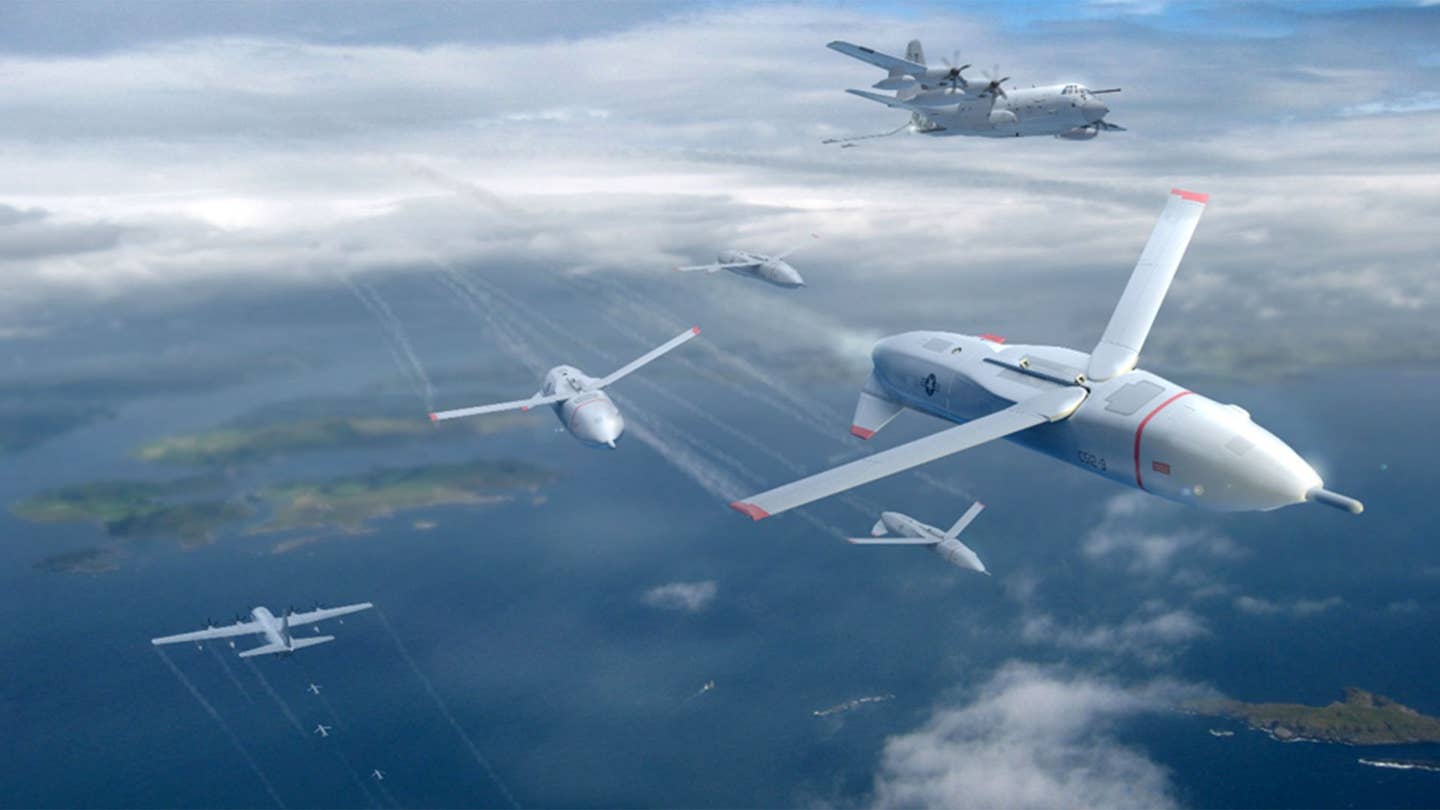DARPA Gremlins Program Developing Swarms of Drones
Reusable networked drones would launch from and return to an aerial mothership.

The military jargon describing the Defense Advanced Research Projects Agency’s Gremlins program is opaque and tedious, full of phrases like “volleys of low-cost, reusable systems,” “denied zones,” “aircraft integration concepts,” and “distributed air operations.” The layman’s translation of the program specs is something every futurist freak can get behind: swarms of drones launched at altitude from an airplane, flying into enemy territory to autonomously carry out missions, returning to a different mothership airplane at altitude when finished.
As part of its systems of systems” initiatives, DARPA wants a multi-mission aerial vehicle that’s more flexible – and reusable – than a missile but less expensive to develop, maintain, and operate than a traditional plane. The agency imagines Gremlins taking off from a C-130 transport or even a fighter jet, from which they would fly into contested airspace to perform pre-attack reconnaissance or electronic jamming, to gather intelligence or surveil. The volume of drones would prevent the enemy from shooting down all of them, at the same time increasing the chances of successful mission because the networked vehicles can reorganize their efforts autonomously.
The proposals suggest a per-unit drone cost of $700,000, three-hour mission capability, 20 total reuse cycles, and a 24-hour mission turnaround time. For comparison, the single-use AGM-65 Maverick air-to-surface missile costs from $17,000 to $110,000. The multi-use F-22 Raptor stealth fighter costs $150 million. The F-35 Lightning – which still isn’t ready – is pegged at anywhere from $181 million to $300 million per. Set next to those figures, $700,000 – just $35,000 per mission – is easy money.
DARPA recently selected Composite Engineering, Dynetics, General Atomics, and Lockheed Martin to prepare solutions for Phase 1 of the program examining aspects such as airframe designs, launch and recovery techniques, and precision station keeping. Two of the four are drone veterans: General Atomics makes the Predator and Reaper drones, Composite Engineering builds the Skeeter military target drone. Lockheed’s former attempts in the field go way back to the D-21 recon drone of 1962.
DARPA expects contractors to keep costs down by using current technology and “efficient turbine engines.” Perhaps the contractors can glean something from DARPA’s MALD drone decoy program, aimed at suppressing enemy air defenses. When the Pentagon abandoned the program, the Air Force picked it up and military supplier Raytheon got it to work. The Air Force is now working on its own recoverable drone program allowing for 12-hour missions at a range of 2,000 miles.
The four Gremlins entrants have a year to deliver a mock-up. DARPA will choose two of them for Phase 2, with final selection and flight demonstrations planned for 2020.
